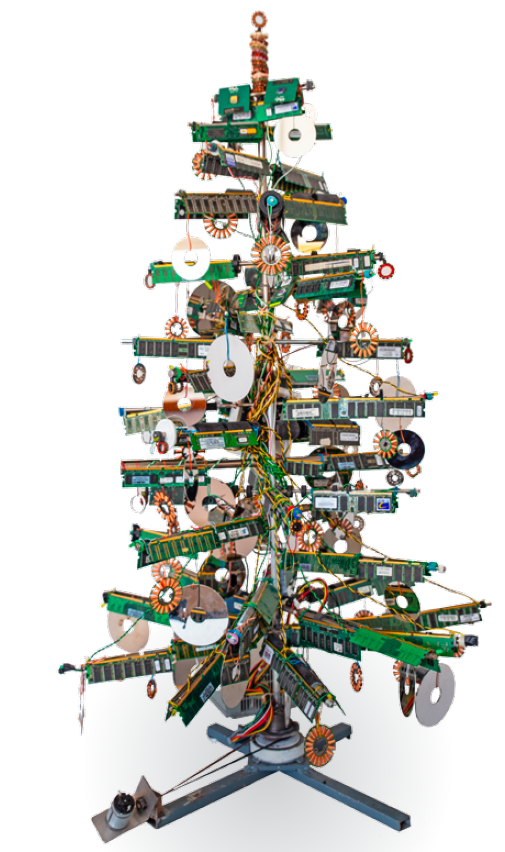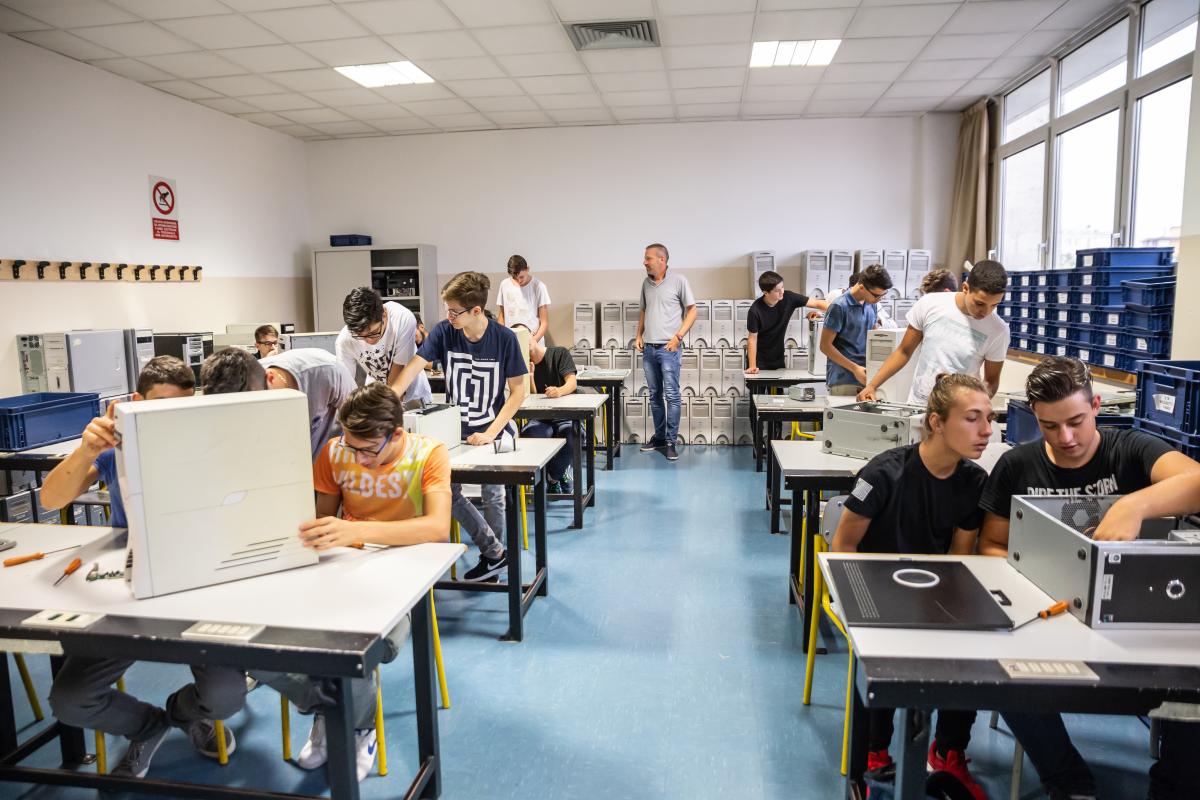Supporting materials
Download
Download this article as a PDF

Do you have a drawer full of old mobile phones? One teacher is exploring new uses for such items, while nurturing his students’ creative imaginations.
Teenagers can hardly imagine life without smartphones. As adults, we also depend on these and other electronic devices, which are now an essential part of our lives. While smartphones, tablets and laptops often have intensely useful lives, they do not have very long ones, usually lasting much less than a decade. Once they are damaged or their performance declines – or they just fall out of fashion – they become part of the ever-increasing pile of ‘e-waste’.

E-waste is considered a hazardous material, as it contains heavy metals such as lead, mercury, cadmium and chromium, so it needs to be disposed of carefully. It can also generate toxic compounds if burned. But e-waste presents a challenge and an opportunity, both for the economy and for the environment: it is, in effect, a goldmine due to the rare metals it contains.
It is not easy to recover these metals from e-waste, however, because many exist in only trace amounts. Metal compositions also differ from one device to the other, and from one year to the next, so it is difficult to optimise the recovery of these materials commercially. As a result, only a small proportion of the hidden value within e-waste is recovered at present, even using the most up-to-date techniques.

One person who is well aware of this challenge is Roberto Zamparini, a teacher of informatics and computer graphics in a high school in northern Italy. Outside the classroom, Roberto works with local enterprises as a consultant and software developer. He has also set up a recycling project that brings together commercial metal recovery companies and university researchers, with the aim of finding new ways to maximise the recovery of precious metals from e-waste.
At school, Roberto is very engaged in finding uses for yesterday’s technology in his teaching. His role gives him access to a lot of old electronic material, and he has used this to set up a ‘disassembly lab’, where students are challenged to take apart these technologically complex objects. They learn how to open smartphones and computers to repair and recycle them – or even to create artistic objects. In 2016, Roberto and his students created an e-waste Christmas tree in the disassembly lab, made solely from recovered electrical components, complete with festive flashing lights.

Another use Roberto has found for e-waste items is to help teach scientific concepts by revealing the science behind how these devices work – from the physics underlying touchscreens and microphones, to the peculiar properties of the chemical elements inside them. This approach helps to make the ideas more appealing to students, especially those who are reluctant to engage with the theoretical side of science and technology.
The components themselves are also useful for hands-on science experiments: for example, Roberto uses the neodymium magnets found in hard drives in an experiment to demonstrate eddy currents (see additional materials section), and light polarisation can be investigated using old LCD screens.
Recently, Roberto collaborated with a biology teacher to set up an interdisciplinary project on taxonomy, adapting the principles of biological classification to sorting e-waste components so that they can be better recognised and separated. The aim was not only to achieve greater re-use, but also to discover classification principles that make disassembly easier.
Another of Roberto’s successful recycling projects focused on technology from a much earlier era: railways. Having found a disused railway track near his home, Roberto and his students set about building a human-powered vehicle – made almost entirely from recycled parts – to run on the track. The prototype ‘rail rider’ first ran in April 2017 and attracted a lot of attention – so much so that the track re-opened in 2018, complete with passenger trains.
The rail rider project even made an impact internationally: in September 2017, an Austrian group that was trying to re-open a local railway in Kötschach-Mauthen asked to borrow the rail rider. So Roberto and some students drove across the border with the prototype, to ride it on the disused railway in Austria – which itself now has better prospects of re-opening.
Roberto’s projects are linked not only by a creative approach to recycling, but also by the positive interactions that he works hard to stimulate within the classroom. Some of his students have to deal with difficult personal situations, and their problems can affect the mood and productivity of the entire class. As well as being ready to listen to them and provide practical help, Roberto finds that the best approach to successful learning is to encourage his students to engage with their studies on an emotional level.
For example, he believes one key strategy is to give students as much autonomy as possible. “Teenagers are too controlled, at home, at school, in society. The only way for them to have some freedom is by breaking the rules”, he says. “For example: if you are younger than 14 years old, in Italy, you may not be allowed to go home from school without an adult in charge. In this way the autonomy of students is not fostered, at an age where they are striving to achieve it.”

For this reason, Roberto’s teaching approach encourages freedom in the classroom. He lets the students make their own choices, and he often splits the class up according to what different groups would like to do. Sometimes he leaves a group of students alone in a lab, trusting them with the delicate equipment, while he stays with other students elsewhere in the school. “The thrill of being alone in an important school lab, doing what you really want to do, is an incredible impulse for learning”, he says. “I try to make the students part of a process of trust. To do that, of course, I also have to put my own emotions in the game.”
He sums up his philosophy with this message: “Students at school should do at least one thing every day that they are really good at. The ability of the teacher is to find for each one of them this little something, and to make the student proud of this”, he says. “The rest will come from the consciousness of this achievement.” Once again, the key is to appreciate the precious material within, and to take care of it for the future.
The author would like to thank the school, IPSIA Della Valentina of the Istituto di Istruzione Superiore Statale di Sacile e Brugnera, Italy, for their help with preparing this article.
Download this article as a PDF